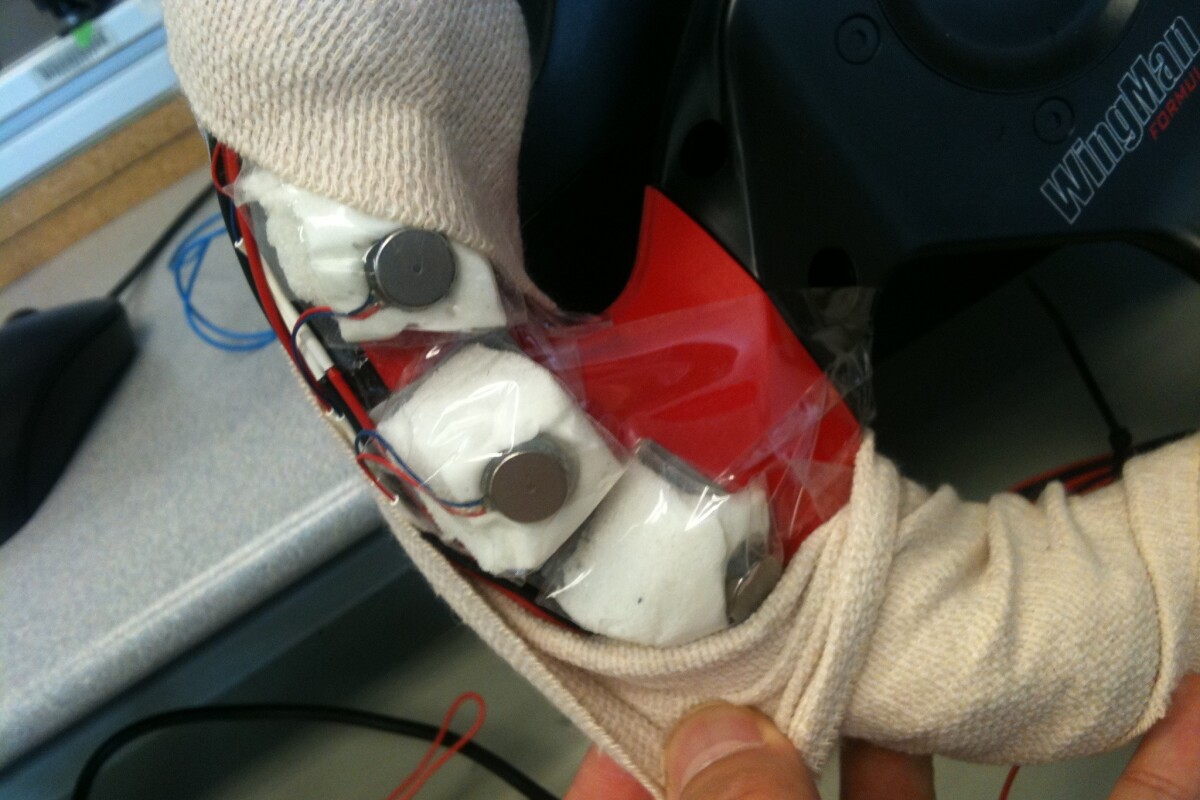Many drivers would be lost – quite literally – without their in-car navigation systems. When installed in vehicles that some people would say are already overcrowded with instrumentation, however, could such systems be just one visual distraction too many? Researchers at Carnegie Mellon University and AT&T Labs are addressing that concern, by experimenting with a system that conveys navigational cues through vibrations in the steering wheel.
The experimental haptic-feedback-providing steering wheel designed for the project is by no means the first one ever made. Scientists at the University of Utah, for instance, have been testing a wheel that tugs on the skin of the driver’s fingers, indicating which way they should turn. Additionally, various automakers are now offering cars with steering wheels that vibrate to warn drivers of approaching road hazards, or to let them know that they’re drifting out of their lane.
The AT&T-designed; wheel is unique, however, in that it incorporates an array of 20 vibrating actuators within its rim, which can be made to fire in any order – the need for a right-hand turn is indicated by the actuators firing in a clockwise direction, while a counterclockwise series of vibrations indicates that a left is in order.
The wheel was tested at Carnegie Mellon using a computer-based driving simulator, with and without accompanying traditional visual and auditory navigational cues. The test subjects included a group of 16 young drivers, aged 16 to 36, along with 17 older drivers, who were over the age of 65. All 33 drivers drove a virtual course that included obstacles such as stop signs, pedestrians and traffic lights. As they did so, indicators of their attention level and cognitive workload – such as brain wave activity, heart rate, blink rate, and pupil size – were measured by the researchers.
It was found that by combining haptic and auditory cues, but eliminating the visual cues (meaning the navigational device’s screen), all participants glanced away from the road less than they did when using a conventional system. Specifically, nine percent less often for the younger drivers, and four percent less for the older group.
When a combination of all three types of cues was tried, however, the younger drivers once again glanced away less, but that was not the case with the older drivers. Additionally, while the audio/visual/haptic combo reduced the cognitive workload of the younger subjects, it did not do so for the older participants. This could be because the younger group expressed a preference for visual cues, while the older group preferred auditory cues – for them, the extra visual cues were just a distraction that their eyes were drawn to.
According to the researchers, these findings indicate that when designing navigation systems for use by older drivers, care needs to be taken to allow them to focus on the task at hand, and not saturate them with feedback.
Source: Carnegie Mellon University




